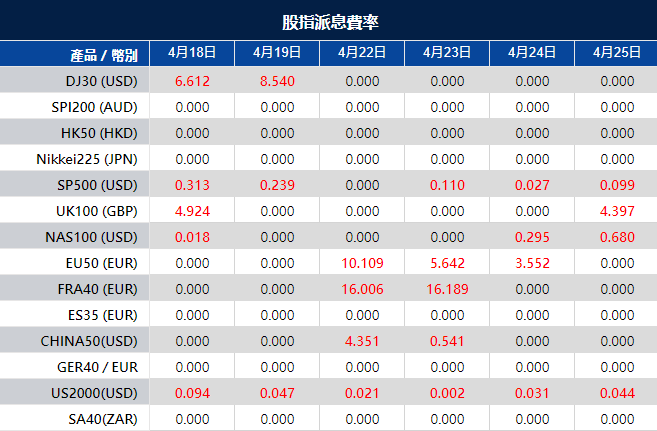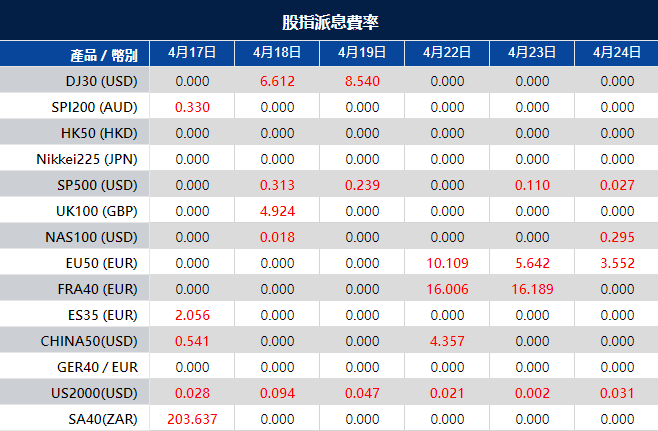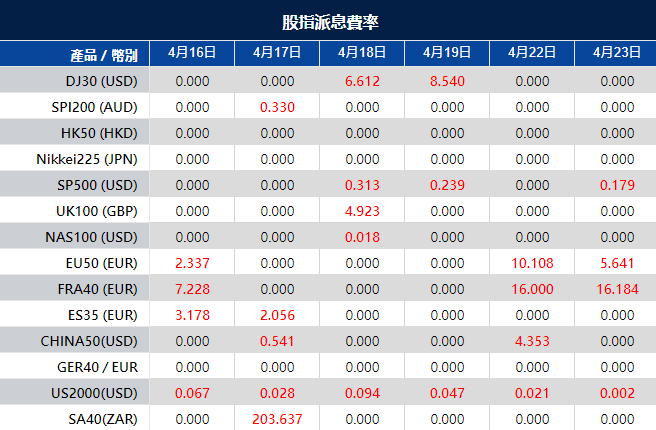ICYMI – Market summary for today, 18 April 2024:
Chinese Market Performance
The Hang Seng Index in Hong Kong edged up by 0.2% to 16,281.48 today, showing a modest rise despite opening flat. This minor gain occurs amid a backdrop of cautious investor sentiment following hawkish remarks from Federal Reserve policymakers. These comments hint at ongoing economic challenges which could suggest a possibility of prolonged high-interest rates. This environment has left Hong Kong stocks without clear direction. In response to these market conditions, it would be prudent to anticipate a subdued performance in the near term, especially for sectors sensitive to interest rate changes.
In the decliners’ column, China Hongqiao Group dropped by 3.9%, while PetroChina and Wharf REIT both fell by 2.4%. Conversely, Ping An Insurance, Shenzhou International, and Zhongsheng Group recorded gains of 3.3%, 3.2%, and 2.5% respectively, showing some resilience within certain segments of the market.
Chinese markets too opened lower, notably influenced by downturns in technology and semiconductor stocks. Beijing Kingsoft Office Software and iFlytek saw declines of 1.8% and 1.25% respectively. This sector-wide drop came after ASML, a pivotal player in semiconductor manufacturing equipment, reported weaker-than-expected bookings for the first quarter. However, metal stocks like Baoshan Iron & Steel and Xinyu Iron & Steel bucked the trend, possibly due to potential U.S. tariff increases on Chinese steel and aluminum, rising 1.9% and 0.5% respectively. Overall, the Shanghai Composite Index was down slightly by 0.1% to 3,068.48, while the Shenzhen Composite Index and ChiNext Price Index fell by 0.8% and 1.5%, indicating broader market pressures.
Australian Market Performance
In Australia, the situation appears more grim with more than 10,000 companies expected to enter external administration by the end of June. This is the highest level since the 2012-2013 financial year, marking a significant uptick in business failures. This rise in insolvencies marks a 36% increase from the previous period, reflecting heightened economic strain. The Australian Securities and Investments Commission’s latest data shows 7,742 companies entered external administration from July 1, 2023, to the end of March this year. This could forecast tougher economic conditions ahead, possibly impacting consumer spending and business investment.
Southeast Asia Market Performance
Singapore’s FTSE Straits Times Index recorded a rise of 0.3% to 3,164.00, showing resilience despite an unfavorable lead from Wall Street and ongoing global economic concerns, such as fading hopes for Fed rate cuts and inflation worries. Noteworthy performers include Seatrium, up 1.3%, Singapore Technologies Engineering, which rose 1.0%, and OCBC, gaining 0.7%. Meanwhile, CapitaLand Investment and Hongkong Land were among the significant decliners, dropping 1.6% and 1.5%, respectively.
In Malaysia, the Kuala Lumpur Composite Index remained unchanged at 1,540.04, indicating market caution. Analysts at Malacca Securities suggest a cap on potential upside, driven by recent weakness in Wall Street and possible shifts towards defensive sectors. The predicted support and resistance levels for the KLCI are between 1,520-1,525 and 1,555-1,560. Notable movements included Bumi Armada, down 1.7%, and Mr. D.I.Y. Group, which decreased by 0.7%, whereas Telekom Malaysia and YTL Power International saw increases of 0.8% and 1.0%, respectively.
Regarding commodities, crude palm oil prices are expected to stabilise in the near term, supported by supply constraints. Analysts from UOB KayHian forecast Malaysia’s palm oil inventory to continue its decline into April, with production levels remaining flat and exports remaining robust. Nevertheless, the anticipated increase in soybean supplies from Brazil and Argentina in May could introduce price volatility, particularly as it coincides with a typically higher palm oil production period.
Start trading now — click here to create your live VT Markets account.








